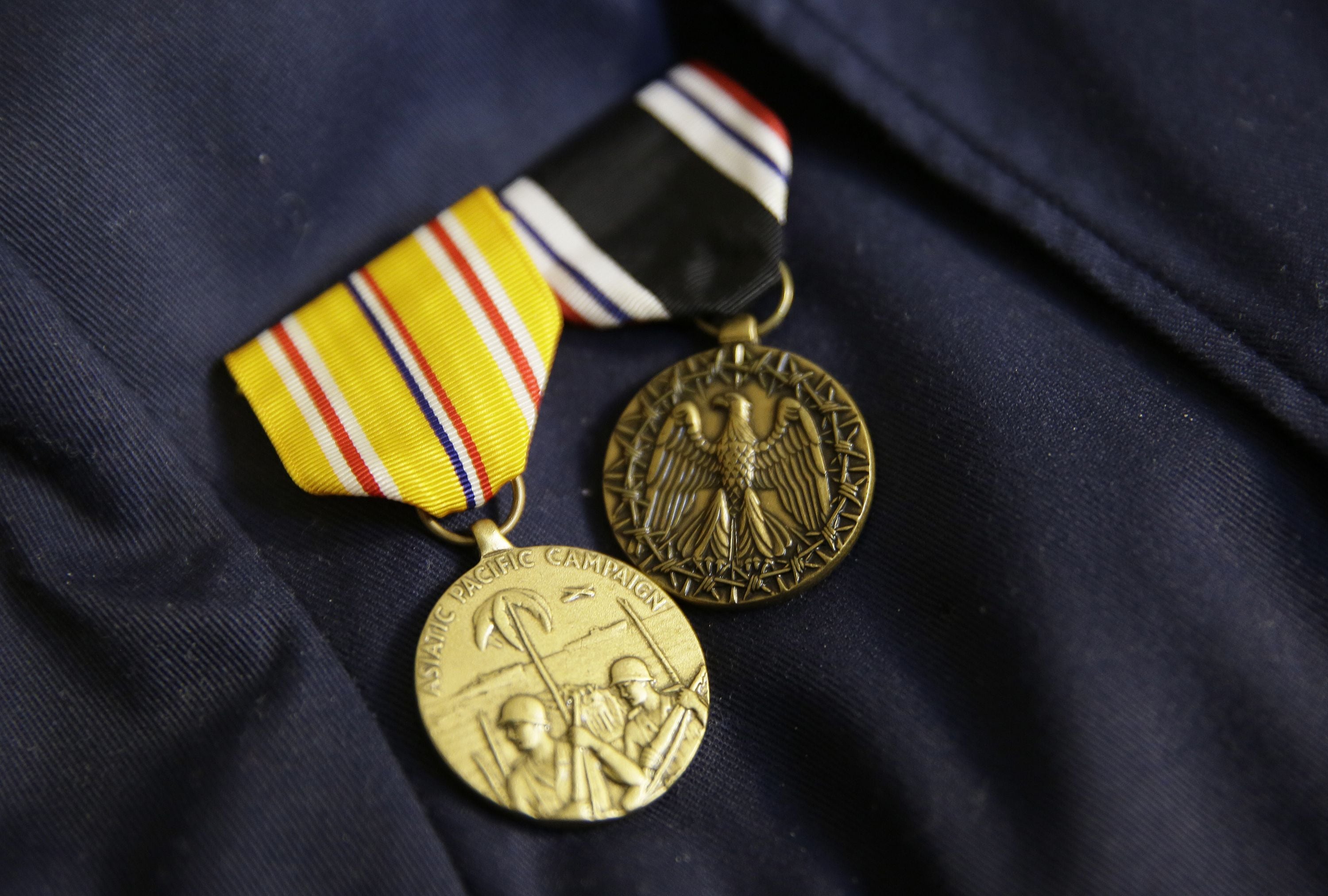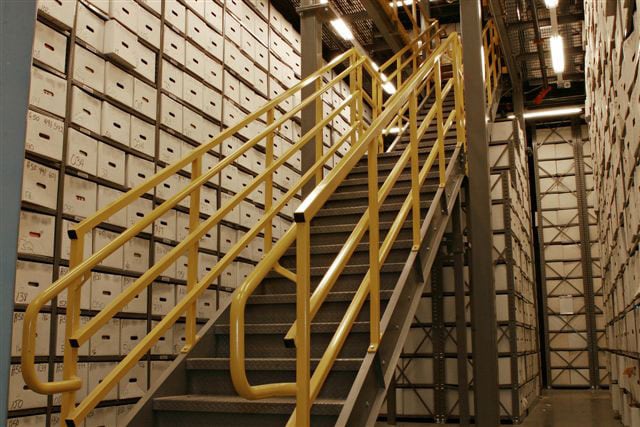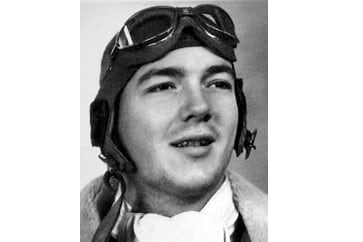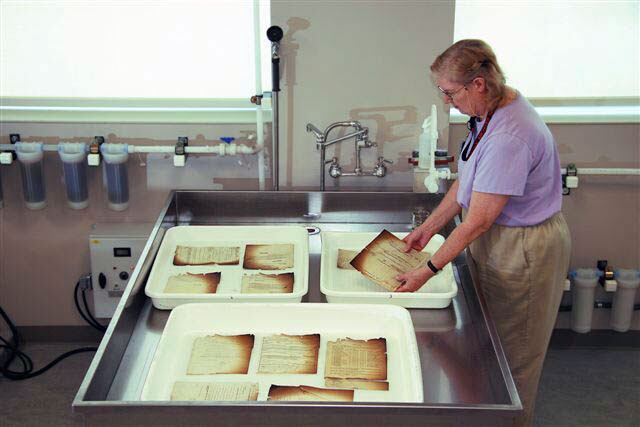Of the 16 million Americans who served in World War II, it’s expected that about a half-million are alive in 2018.
Many veterans of this and other conflicts will take with them stories of service that can’t be replaced. Some will have earned commendations they mentioned only in passing, or ignored out of modesty, or locked away alongside painful memories.
Family members who want to learn more about their relative’s service, even those in service themselves, may have limited knowledge when it comes to navigating an archive process that, with a bit of persistence, can provide more than just a few dates and places.
Military Times sought advice from the National Personnel Records Center, as well as in-house expert Doug Sterner, curator of the Military Times Hall of Valor, to provide some basic steps on the path to piecing together a personal history.
1. First thing’s first. Veterans or next of kin seeking records can visit this National Archives website to learn the basics. Many requests can be filed electronically; be sure to have a Social Security number, service number, dates of service and other basic information at the ready.
You can also get a printable version of Standard Form 180, Request Pertaining to Military Records. This form most likely will grant eventual access to all relevant information, provided it can be filled out as completely as possible. As Sterner pointed out, “With more than 60 million records at NPRC, even what one considers a unique name may not be unique.”
2. What will I get? More than half of the 1.2 million military records requests received by NPRC involve separation documents: DD-214s or older equivalents. Because these documents are key to receiving various benefits, they are prioritized by the center: Officials said nearly 94 percent of these requests that didn’t involve records destroyed or damaged in a 1973 fire (see below) were processed in less than 10 days.
Other requests averaged about 24 days. If you’re seeking more than the separation documents, be sure to request specific records via the online submission process or SF-180. If you’re after an entire Official Military Personnel File, make that request clear on the form.
If your request takes longer than 10 days, you can request a status update online or via phone (314-801-0800). In their online guidance, NPRC officials say sending a follow-up request in less than 90 days “may cause further delays.”
3. The “entire” file. If you’re after materials such as clothing issuances, leave requests or similar documents, you may have to re-submit your request after receiving the file in question. Under a policy outlined at Archives.gov, the NPRC provides “only copies of key documents and extracts of vital information, rather than a copy of every document in a personnel and/or medical file.”
Requests since late 2009 have included an explanation of this policy, per the website.
4. Rush requests. NPRC tasks some of its staff exclusively with high-priority requests, such as veterans facing a medical emergency or family members seeking replacement awards prior to a funeral. Online submission portals and the SF-180 include sections where these requests can be explained fully; be sure to include such details if they apply.
(Veterans who lost critical separation documents as a result of recent hurricanes can also take advantage of this expedited process by including the word “Hurricane” in the comments section of their online request or under the “Purpose” field in Section II of their SF-180.)

5. Old actions, new honors. Even service members who’ve retained complete military records from their time of discharge may be missing honors and awards they earned without realizing it. Sterner cited three examples of high-level honors that came after the recipients took off the uniform:
- The Silver Star didn’t exist as a medal until 1932. Prior to 1932, distinguished service members received “Citation Stars” from their commanding general to denote their accomplishments. Those awards are upgradable to Silver Stars, but the service member had to request it. The same goes for next of kin.
- Soldiers who earned the Combat Infantryman Badge or Combat Medic Badge during World War II are eligible for a Bronze Star Medal thanks to a directive from Gen. George C. Marshall … in 1947. By that point, many troops covered by the directive had left service. Troops or next of kin can request issuance of the award and request their military records be updated.
- The Prisoner of War Medal, established in 1985, targeted Vietnam War-era POWs but any service member who spent time in captivity back to World War I was retroactively eligible. Many World War II and Korean War POWs may not be aware of the change, and family members of deceased former POWs also may request the honor for their relative.

6. About that fire … A July 12, 1973, blaze at the NPRC’s military personnel records building in St. Louis took out up to 18 million personnel files, including 80 percent of those belonging to soldiers discharged between Nov. 1, 1912, and Jan. 1, 1960, and 3 in 4 airmen discharged prior to Jan. 1, 1964, whose names came after James E. Hubbard in the alphabet.
Salvage efforts began immediately, both on site and via a bulletin that required government agencies to maintain any other records that might be used to reconstruct military personnel files. They continue to this day. About 3,000 requests for records affected by the fire are processed by the center each week, NPRC officials said.
Even if the file you’re seeking was lost entirely, that doesn’t mean at least some of the information it contained can’t be recovered, Sterner explained.
“While individual records were lost in that fire, the unit records — including histories, action and morning reports, and general orders for awards to individuals within that unit — are warehoused at the National Archives,” he said. “The caveat is that there is no index for these records … one must generally know exactly what general orders or report they are looking for, or sift through thousands of pages of documents.”
These general orders are especially useful in assembling lists of award recipients. Sterner pointed to the work of Air Force Col. Albert Gleim, who, among other archival efforts he undertook after retiring from service, published an index of all Navy Cross recipients. Gleim died in 1997; his work, and that of many others, provided a foundation for the Hall of Valor database.
7. Medical confusion. NPRC officials said outpatient and inpatient medical records can be the most troublesome of the 1 million-plus annual requests they receive. If NPRC has the records, they can be obtained using the SF-180 or eVetRecs (online request) methods outlined above. But NPRC likely won’t have the records if inpatient treatment took place within the last three years (the records remain with the treatment facility), or if outpatient treatment involves a veteran discharged from the mid-1990s through 2014.
The proper record system will vary depending on when the treatment was obtained and what service was involved. NPRC aims to provide proper contacts, officials said; learn about the Department of Veterans Affairs Records Management Center, and get links to other record-request sites, here.
8. Do I need my congressman? No, said the NPRC: Online submissions and standard forms make outside help unnecessary, especially for requests involving separation documents.
Maybe, said Sterner: While you should include a request for unissued or lost medals along with your NPRC request, he said, “In the case of awards never received, it is best to work through a congressional office.”
These offices generally have staffers who’ve become well-versed in the awards and records process. Successful requests can result in the lawmaker presenting the award(s) to veterans and/or family members in ceremonial fashion.
Congressional offices also may offer assistance when it comes to third-party requests, those involving distant relatives, or others that aren’t as easily processed through NPRC’s online portal.
RELATED

9. Arlington honors. Full details on burial and inurnment eligibility at Arlington National Cemetery are available at the cemetery’s official website; they include eligibility for service members who received the Medal of Honor, a service cross, a Distinguished Service Medal, Silver Star or a Purple Heart.
Separation documents (DD-214 or similar) nearly always reflect these awards and will serve as proof of eligibility. Requesting these documents are the first step, Sterner said, though more research may be required if the documents are not available or do not include relevant information that can be corroborated via other sources, such as general orders.
Kevin Lilley is the features editor of Military Times.




